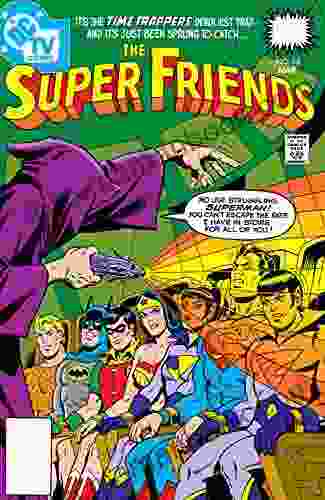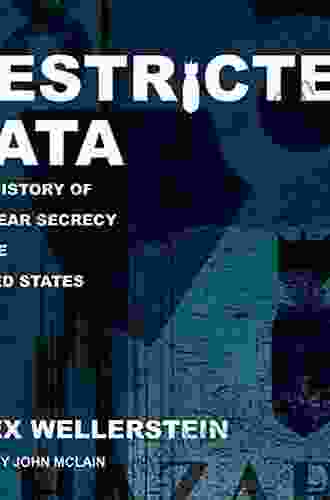The History of Nuclear Secrecy in the United States: A Long and Winding Road

4.6 out of 5
| Language | : | English |
| File size | : | 4766 KB |
| Text-to-Speech | : | Enabled |
| Screen Reader | : | Supported |
| Enhanced typesetting | : | Enabled |
| Word Wise | : | Enabled |
| Print length | : | 557 pages |
| Lending | : | Enabled |
The history of nuclear secrecy in the United States is a long and winding road, marked by both progress and setbacks. From the Manhattan Project to the present day, the government has grappled with the challenges of keeping nuclear secrets safe while also ensuring transparency and accountability.
The Manhattan Project: The Birth of Nuclear Secrecy
The Manhattan Project was the top-secret research and development program that produced the first atomic bombs during World War II. The project was shrouded in secrecy from its inception, and the government went to great lengths to keep its existence a secret from the public.
There were several reasons for this secrecy. First, the government wanted to prevent the Nazis from developing their own atomic bombs. Second, the government wanted to maintain a monopoly on nuclear weapons. And third, the government was concerned about the public's reaction to the news that nuclear weapons existed.
The Atomic Age: A Legacy of Secrecy
After the war, the United States entered a new era of nuclear secrecy. The government continued to maintain a tight grip on nuclear information, and it classified vast amounts of data as "secret" or "top secret." This secrecy extended to all aspects of nuclear weapons, from their design to their deployment.
The government's secrecy policy was driven by a number of factors. First, the government believed that nuclear weapons were essential to national security. Second, the government was concerned about the proliferation of nuclear weapons to other countries. And third, the government wanted to maintain control over the public's perception of nuclear weapons.
The Cold War: A Heightened State of Secrecy
The Cold War between the United States and the Soviet Union further intensified the government's secrecy policy. The two superpowers engaged in a nuclear arms race, and each side sought to keep its nuclear secrets hidden from the other.
The government's secrecy policy during the Cold War was even more restrictive than it had been during World War II. The government classified virtually all information about nuclear weapons as secret, and it punished anyone who violated its secrecy rules.
Nuclear Secrecy and Public Accountability
The government's secrecy policy has not been without its critics. Some critics have argued that the government's secrecy has hindered public understanding of nuclear weapons and made it difficult to hold the government accountable for its nuclear policies.
In recent years, there has been a growing movement to declassify more information about nuclear weapons. This movement has been driven by a number of factors, including the end of the Cold War, the rise of the internet, and the growing public concern about nuclear proliferation.
The government has resisted some pressure to declassify more information about nuclear weapons. However, the government has also taken some steps to declassify more information, and it has made some progress in increasing transparency and accountability.
The Future of Nuclear Secrecy in the United States
The future of nuclear secrecy in the United States is unclear. The government is likely to continue to maintain a high level of secrecy about nuclear weapons. However, the government may also take steps to declassify more information about nuclear weapons and to increase transparency and accountability.
The long and winding road of nuclear secrecy in the United States is likely to continue for some time to come.
The history of nuclear secrecy in the United States is a complex and controversial one. The government's secrecy policy has been driven by a number of factors, including national security, the proliferation of nuclear weapons, and the public's perception of nuclear weapons.
The government's secrecy policy has not been without its critics. Some critics have argued that the government's secrecy has hindered public understanding of nuclear weapons and made it difficult to hold the government accountable for its nuclear policies.
In recent years, there has been a growing movement to declassify more information about nuclear weapons. This movement has been driven by a number of factors, including the end of the Cold War, the rise of the internet, and the growing public concern about nuclear proliferation.
The government has resisted some pressure to declassify more information about nuclear weapons. However, the government has also taken some steps to declassify more information, and it has made some progress in increasing transparency and accountability.
The future of nuclear secrecy in the United States is unclear. The government is likely to continue to maintain a high level of secrecy about nuclear weapons. However, the government may also take steps to declassify more information about nuclear weapons and to increase transparency and accountability.
The long and winding road of nuclear secrecy in the United States is likely to continue for some time to come.
4.6 out of 5
| Language | : | English |
| File size | : | 4766 KB |
| Text-to-Speech | : | Enabled |
| Screen Reader | : | Supported |
| Enhanced typesetting | : | Enabled |
| Word Wise | : | Enabled |
| Print length | : | 557 pages |
| Lending | : | Enabled |
Do you want to contribute by writing guest posts on this blog?
Please contact us and send us a resume of previous articles that you have written.
 Top Book
Top Book Novel
Novel Fiction
Fiction Nonfiction
Nonfiction Literature
Literature Paperback
Paperback Hardcover
Hardcover E-book
E-book Audiobook
Audiobook Bestseller
Bestseller Classic
Classic Mystery
Mystery Thriller
Thriller Romance
Romance Fantasy
Fantasy Science Fiction
Science Fiction Biography
Biography Memoir
Memoir Autobiography
Autobiography Poetry
Poetry Drama
Drama Historical Fiction
Historical Fiction Self-help
Self-help Young Adult
Young Adult Childrens Books
Childrens Books Graphic Novel
Graphic Novel Anthology
Anthology Series
Series Encyclopedia
Encyclopedia Reference
Reference Guidebook
Guidebook Textbook
Textbook Workbook
Workbook Journal
Journal Diary
Diary Manuscript
Manuscript Folio
Folio Pulp Fiction
Pulp Fiction Short Stories
Short Stories Fairy Tales
Fairy Tales Fables
Fables Mythology
Mythology Philosophy
Philosophy Religion
Religion Spirituality
Spirituality Essays
Essays Critique
Critique Commentary
Commentary Glossary
Glossary Bibliography
Bibliography Index
Index Table of Contents
Table of Contents Preface
Preface Introduction
Introduction Foreword
Foreword Afterword
Afterword Appendices
Appendices Annotations
Annotations Footnotes
Footnotes Epilogue
Epilogue Prologue
Prologue Kathleen Weber
Kathleen Weber Jules Romains
Jules Romains Esther Crain
Esther Crain Magali Mougel
Magali Mougel Veronica Roberts
Veronica Roberts Vinoth Kubrick
Vinoth Kubrick Robert J Schulenburg
Robert J Schulenburg Mike C
Mike C Lucinda Race
Lucinda Race Shan Wee
Shan Wee Marisela Norte
Marisela Norte Rhys Campbell
Rhys Campbell William Shakespeare
William Shakespeare Barbara Kindermann
Barbara Kindermann Elizabeth Young
Elizabeth Young Jordan Petry
Jordan Petry Ryozo Himino
Ryozo Himino Jay Munoz
Jay Munoz Jack Mars
Jack Mars Alan Evans
Alan Evans
Light bulbAdvertise smarter! Our strategic ad space ensures maximum exposure. Reserve your spot today!

 Harvey HughesCelebrating Birthdays, Holidays, Goals, and Milestones: A Journey of Growth...
Harvey HughesCelebrating Birthdays, Holidays, Goals, and Milestones: A Journey of Growth... Garrett PowellFollow ·5.9k
Garrett PowellFollow ·5.9k Louis HayesFollow ·18.9k
Louis HayesFollow ·18.9k Jonathan HayesFollow ·18.8k
Jonathan HayesFollow ·18.8k Miguel de CervantesFollow ·18.6k
Miguel de CervantesFollow ·18.6k Everett BellFollow ·7.9k
Everett BellFollow ·7.9k Edmund HayesFollow ·3.2k
Edmund HayesFollow ·3.2k Oliver FosterFollow ·17.4k
Oliver FosterFollow ·17.4k Jules VerneFollow ·13.4k
Jules VerneFollow ·13.4k

 Dean Cox
Dean CoxHow to Make Decisions Easily & Effortlessly: The...
The Different Types of Decisions There...

 Gustavo Cox
Gustavo CoxThe End of World War II and the Birth of Baseball's...
The end of...

 Patrick Rothfuss
Patrick RothfussThe Dantes: An 11-Family Saga of Billionaires, Soulmates,...
The Dantes is an epic family saga that follows...

 Dylan Mitchell
Dylan MitchellSuper Friends: The Animated Adventures That Defined a...
In the vibrant landscape of American...

 Jamal Blair
Jamal BlairCollege For Students With Disabilities: We Do Belong
College can be a...
4.6 out of 5
| Language | : | English |
| File size | : | 4766 KB |
| Text-to-Speech | : | Enabled |
| Screen Reader | : | Supported |
| Enhanced typesetting | : | Enabled |
| Word Wise | : | Enabled |
| Print length | : | 557 pages |
| Lending | : | Enabled |












